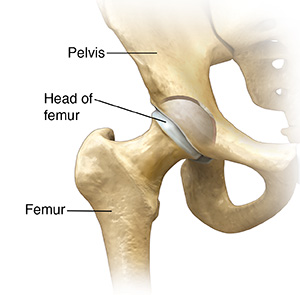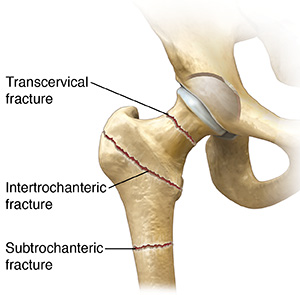Understanding Hip Fractures
Understanding Hip Fractures
BIG: The hip is the largest weight-bearing joint in the body. It’s also a common place for a fracture after a fall—especially in older people. Hip fractures are even more likely in people with osteoporosis a disease that leads to weakened bones.
A healthy hip
The hip is a ball-and-socket joint where the thighbone (femur) joins the pelvis. When the hip is healthy, you can walk, turn, and move without pain. The head or “ball” of the femur fits into a socket in the pelvis. The ball and socket are each covered with smooth cartilage. This allows the ball to glide easily in the socket. Blood vessels supply oxygen and nutrients to keep the hip joint healthy.

A fractured hip
The hip can fracture in many places. Most often, the fracture occurs in the upper part of the femur. In rare cases, you can also have more than 1 type of fracture at a time:
-
Transcervical fracture. A break across the neck of the femur, just under the ball. This type of fracture can interrupt blood flow to the joint.
-
Intertrochanteric fracture. A break down through the top of the femur.
-
Subtrochanteric fracture. A break across the upper shaft of the femur.

Updated:
January 17, 2020
Reviewed By:
Joseph, Thomas N., MD,Sather, Rita, RN